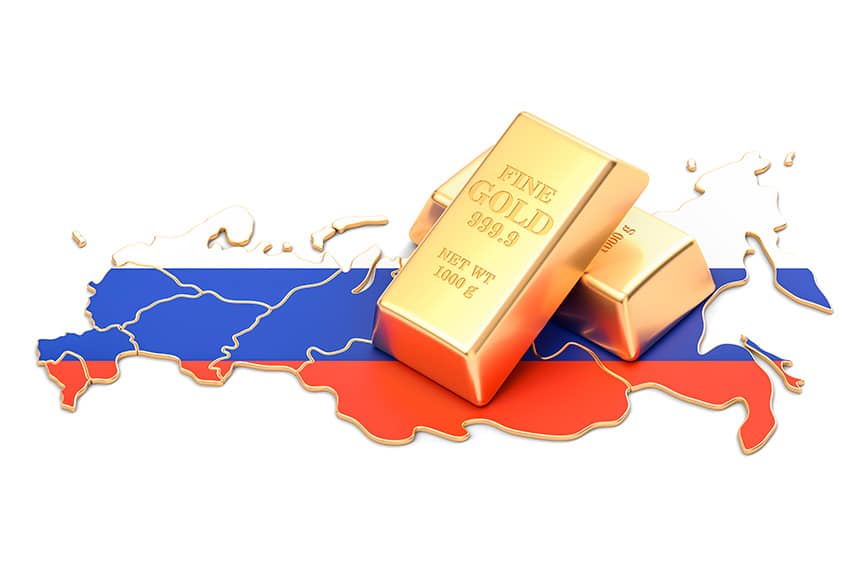
It’s no secret that central banks hate gold. If they could press a button and destroy every last grain of gold that has ever been produced, they would do it. Gold has always been the ultimate restraint on the ability of governments and central banks to create money out of thin air ad infinitum. Even destroying the gold standard, closing the gold window, and moving to a system of floating fiat currencies couldn’t dull the appeal of gold to investors and consumers worried about the purchasing power of their currency.
That’s why central banks have long sought to collude to keep gold’s price low. Whether it was coordinating sales of gold to depress the gold price, loaning out their gold stocks, or other methods, central banks have done everything in their power to minimize the importance of gold, to no avail.
During the last financial crisis more and more investors realized the ability of gold to safeguard the value of their assets, and so they piled into gold with abandon. The result has been a steady increase in gold’s price and a return of gold to many investors’ portfolios. And now that central banks realize that they won’t be able to destroy gold, they seem to have thrown in the towel. If you can’t beat them, join them.
Why Central Banks Care About Gold
Because gold was always primarily a monetary metal, and because it continues to exist, particularly as a well-known and well-loved investor asset, it acts as a barometer of central bank monetary policy. If gold performs poorly, it’s an indicator that investors trust the monetary policy direction of central banks. If gold performs well, it’s an indicator that investors have lost trust in central banks.
Like any other bureaucrats, central bankers would prefer not to have their performance assessed so publicly. They would prefer that gold would disappear, so that there wouldn’t be an alternative to the currencies they create and control. To those looking to exert total control over the monetary system, gold is an escape valve that they would prefer investors not have access to.
But central bankers also realize that they can’t completely ignore gold, nor can they act like it doesn’t exist. Like it or not, they understand that they need to own and hold gold on their balance sheets, as gold is the ultimate money. And while large nations like the US, Germany, China, and others have held large amounts of gold for a long while, smaller nations are upping their purchases of gold, worried at what they have seen in recent years as quantitative easing shows no signs of disappearing anytime soon. While the prospect of a complete collapse of the monetary system seems far-fetched right now, the fact remains that the current system of floating fiat currencies is only about 50 years old, a mere blip in time compared to the millennia in which gold has been used as money.
At the back of many central bankers’ minds is the understanding that a floating system of fiat currencies is untried and likely to fail, but when? The socialist calculation debate of the 1920s established that socialism would ultimately be doomed to fail due to the lack of a pricing mechanism, resulting in the inability to allocate resources throughout the economy in an effective way. Yet it took 69 years for the Soviet Union to collapse.
Arguably, the current monetary system should be in stronger shape, supported as it is by countries with relatively free economies. So when will the monetary system collapse? In 5 years? 25 years? 50 years? Or longer? No one knows, and that’s one reason central bankers are bolstering their gold holdings, to prepare and protect themselves against that doomsday scenario. Is your investment portfolio similarly protected?
Central Bank Gold Purchases in a Historical Context
During the gold bear market of the 1980s and 1990s, central bankers thought that they had finally slain their dragon. They saw low gold prices as an indicator that their monetary policies were working. Inflation had been tamed, interest rates were lowering, and stock markets were booming. And central banks around the world began to divest themselves of their gold holdings.
The United Kingdom remains the poster child of that era, as Chancellor of the Exchequer Gordon Brown sold nearly half the UK’s gold holdings, at a time when gold was below $300 an ounce. That action remains one of the biggest blunders in central banking history, and helped usher in the Central Bank Gold Agreements (CBGA) that finally expired in 2019.
The CBGA was an effort among central banks to coordinate their gold sales so that those sales wouldn’t impact gold markets all at once. The goal was to spread sales out over a period of time and limit the annual amount of sales so that other central banks wanting to sell gold weren’t selling into a depressed market.
Of course, by the time the CBGA expired, its usefulness had long since ceased. Instead of selling gold, central banks were now buying gold. They learned from the 2008 financial crisis that gold was reasserting itself as a vital part of the world monetary and financial system, and they vowed to increase their gold holdings so as not to miss out on the rising tide that was lifting gold prices.
Central Bank Gold Purchases in Recent Years
In the aftermath of the financial crisis, central bank gold sales fell back to nearly zero. And it wasn’t long before the pendulum swung back the other way, as central banks began to purchase gold once again.
Gold buying by central banks in 2018 reached levels that hadn’t been seen in nearly half a century, with 651.5 tonnes of gold purchased, a 74 percent increase over 2017. Russia in particular made large purchases, its largest ever, with much of the gold purchased coming from the country’s own gold production.
Central bank gold purchases increased even further in 2019, with nearly 670 tonnes of gold purchased. With the sudden surge in gold prices in 2020, central bank gold purchases are falling, but they still totaled a healthy 233 tonnes during the first half of the year. Assuming that pace continues through the rest of the year, central banks will still purchase more gold this year than they sold annually during the years of the CBGA.
Why Buy Gold?
For many central banks, the decision to buy gold is part of a strategy to lessen their dependence on the dollar. In that sense, central banks are no different than any other investor. They realize that remaining completely dependent on the dollar is a risky investment. Whether it’s the risk of being cut off from the US financial system or the risk of dollar devaluation due to the Federal Reserve’s loose monetary policy, piling too much money into dollar-denominated assets leaves them exposed. Holding gold provides a hedge against dollar exposure, as its value will continue to rise as the value of the dollar falls.
Investors will face that dilemma too, as massive amounts of money creation will lead to even further devaluation of the dollar. Nominal investment gains could be threatened by increased inflation, and further debt issuance by the federal government could drive investors away from the dollar and dollar-denominated assets. Remaining invested in assets that depend on the strength of the dollar for their performance could be a risky move.
What Can Gold Do for You?
Centuries of experience have demonstrated that gold is the ultimate safe haven asset. That’s as true for central banks as it is for ordinary investors. Central banks have shored up their balance sheets by investing in gold, looking to protect themselves against future uncertainty. Will you do the same?
You don’t have to be able to print your own money to afford to invest in gold, nor do you have to be filthy rich. In fact, an investment of as little as $25,000 can be all you need to get started on your golden journey. With a gold IRA, you can even roll over existing retirement assets into an investment in physical gold coins or bars, allowing you the ability to safeguard your wealth while still maintaining the tax advantages and convenience of a traditional IRA account. If you want to be able to enjoy a comfortable retirement, you owe it to yourself to learn more about how gold can protect your retirement savings. Contact Goldco today to find out how.






